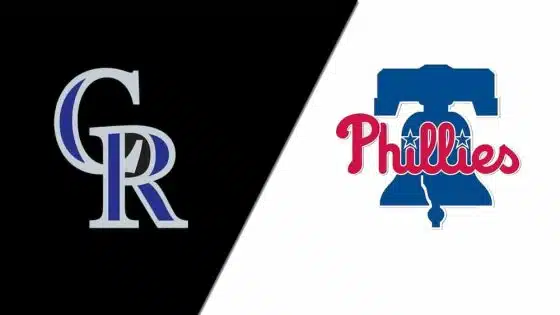Kevin Cook watched a four-decade-old baseball game on the internet and decided to write 253 pages about it. Or at least that’s how it feels. Although his book is officially titled “Ten Innings at Wrigley,” the first two-thirds of it screams, more appropriately: “Three Hours on YouTube.” For Cook’s book is, frustratingly, largely as advertised: a summary of every at-bat that occurred during each half of the ten innings played between the Phillies and the Cubs that long ago afternoon. No exceptions.
At least Cook chose an interesting game. The May 17, 1979 game between the Phillies and Cubs ended 23-22 in favor of the powder blues, with home runs rocketing over the ivy with abandon. It was a fun game to watch. I should know – I watched it in real time as it was happening. Or at least all but the first few innings of it, as I didn’t get home from school until after the Phils had staked the seemingly insurmountable lead the Cubs would then proceed to surmount. Regardless, it was a fun game. The wind was blowing out, the sun was shining, and everybody was hitting. Pete Rose, my new favorite player (having been signed away from the hated Reds the previous offseason), had three hits, Larry Bowa had five, and the Phils seemed primed to run away with the National League East once again, their fourth divisional title in succession. For the ’79 Phillies that May, everything seemed to be coming up, well, roses.
It didn’t turn out that way, of course. The May 17th game would be one of the last highlights of the season for the Phillies, as injuries and, probably more damaging, overall locker room grumpiness, doomed them to a fourth-place finish when all was said and done. The Cubs, being the Cubs, could boast of even fewer highlights in 1979; they were on their way to another season in the wilderness and everybody knew it. When the wind was blowing the right way at Wrigley, though, even they could be counted on to provide some thrills. And on this day, it was and they did.
Cook takes the reader through every at-bat in every inning, chronicling the Phils’ large early lead and the Cubs’ comeback. They’d eventually tie the game at 22 before losing, of course, in the 10th on, what else, a Mike Schmidt home run. If you’re a Phillies fan of certain vintage, you’ll probably enjoy the name drops sprinkled through the text such as Randy Lerch, Ron Reed and – wow! — Rudy Meoli. (If this isn’t the first time you’ve thought of Rudy Meoli in decades, you’re most likely a Meoli.) And older Cubs fans will most likely chuckle upon encountering such long-forgotten names as Larry Biitner and Mick Kelleher. Fans of both clubs might even do what I did – open their laptops and bring up the game itself to take in a few innings and bask in the analog nostalgia.
Which highlights a major problem with the concept of the book. With the game itself so easily accessible, it’s unclear why anybody needs such a detailed summary of it on paper. More problematic, those watching the game on YouTube will probably do what they’re likely to do when reading the book – stay for a few innings and then tune out. It was just an early season game between two teams going nowhere, after all. Not all that much to get excited about.
I’m going to assume that Cook was not responsible for the book’s subtitle: "The Wildest Ballgame Ever, with Baseball on the Brink," but it does him no favors. Marrying the game to the idea that baseball was on the brink brings with it an expectation that at some point the larger historical significance of the game will be broached. To his credit, Cook doesn’t go there, perhaps realizing that the game, itself, doesn’t have any. It was just a game, after all. A fun game, yes, but that’s about as far as it went or can possibly go. Was baseball “on the brink” as the subtitle suggests? Perhaps, but on the brink of what, exactly? Cook never says and it’s not clear how this game contributed to anything more than an enjoyable afternoon for those like me who were lucky enough to have watched it.
The book’s final hundred pages do go a bit beyond the game that afternoon, discussing in clipped fashion the 1980 Phillies, Dave Kingman, Bill Buckner and Cubs reliever Donnie Moore, whose postscript was nothing short of ugly and tragic. These tales are interesting but have been told before, mostly in deeper dives than Cook attempts here.
The one exception of note is Cook’s telling of the feud between Kingman and Buckner, which hasn’t received as much ink as it probably should. As well, the hypothesis that Kingman, of all people, and as retrograde as he could be personality-wise, might actually have been a primitive version of the modern day power hitter, (a “three true outcome” hitter if ever there was one back in the ‘70s) is a fascinating one. So, too, is the notion of the contact-hitting Buckner as, in retrospect, a portrait of the type of hitter soon to go out of fashion. As Cook teases here and there throughout the book, Kingman represented the future of baseball and Buckner the past, and the two players hated each other largely because neither could understand the other’s approach to the game. A study of this relationship would be fascinating. Fingers crossed that one day we’ll get one.
Until then we have this. Enjoyable enough on its own terms but, like the game it describes, once it’s over you’ll wonder what it was all about in the larger scheme of things.
Kevin Cook, Ten Innings at Wrigley: The Wildest Ballgame Ever, With Baseball on the Brink. New York: Henry Holt & Co., 2019. 253 pp. Cloth, $28.00. (This review, along with numerous reviews of baseball books, will be featured in an upcoming issue of NINE: A Journal of Baseball History & Culture)





